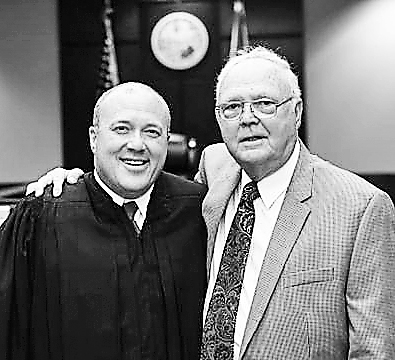Q. Judge Smith, what are the pros and cons of the parties settling their civil lawsuits, and how do you encourage the parties to negotiate deals?
A. Most lawsuits center on the issues of liability and damages. Even if the defendant’s liability is a given, the plaintiff’s ability to collect an award of damages is often not. Moreover, it costs money, time, and anguish to prosecute and defend cases.
People can work out their differences. They can agree on solutions that a court could not impose. And, if all else fails, they can try their lawsuits.
Statistically, courts resolve about four percent of the civil lawsuits by trial. The remaining ninety-six percent end by voluntary dismissal, court order, or settlement. My trial docket would explode if the number of cases that ended in trial doubled.
Don’t get me wrong. I enjoy trying cases. Still, I encourage the parties to settle their disputes by finding a happy balance. I frequently prod the parties to negotiate, emphasizing the risks and expenses of going to trial. I also order the parties to conduct mediation or non-binding arbitration.
Think of going to trial as an elaborate game of chicken. It’s like two cars barreling at one another at a high rate of speed. Unless at least one car diverts, there will be a big collision and carnage. If «war is hell,» the same can be said for lawsuits. Litigation causes upset stomachs and Rolaids moments!
The two primary motivators in settlement talks are fear and greed. If the plaintiff’s greed outweighs his fear, he may refuse more favorable terms than he will win at trial. If the plaintiff’s fear outweighs his greed, he may settle too cheaply. Likewise for defendants, too.
In mediation, the parties work with a trained and unbiased mediator. The parties present a summary of their cases. Afterward, the mediator works with both parties jointly or separately to negotiate a deal. The mediator writes up the parties’ agreement, they sign it, and the court enforces their settlement in place of trial.
In non-binding arbitration, the parties present a summarized version of their cases to an arbitrator. After considering the evidence and the law, the arbitrator decides who wins. If the parties accept the arbitrator’s verdict, the case ends. Either party can reject the arbitrator’s decision and demand a trial. The party requesting a trial may get a better result with a jury. If not, that party risks doing worse and owing extra expenses and costs.
Think about it. Most cases settle because the parties have a full opportunity to plead their claims and defenses and sift through the evidence. By then, they know enough to assess the risks and rewards. Often, when a lawsuit ends at trial, somebody didn’t properly evaluate the case.
The Honorable J. Layne Smith is a Circuit Judge, bestselling author, and public speaker. Send your questions to askjudgesmith@gmail.com.



